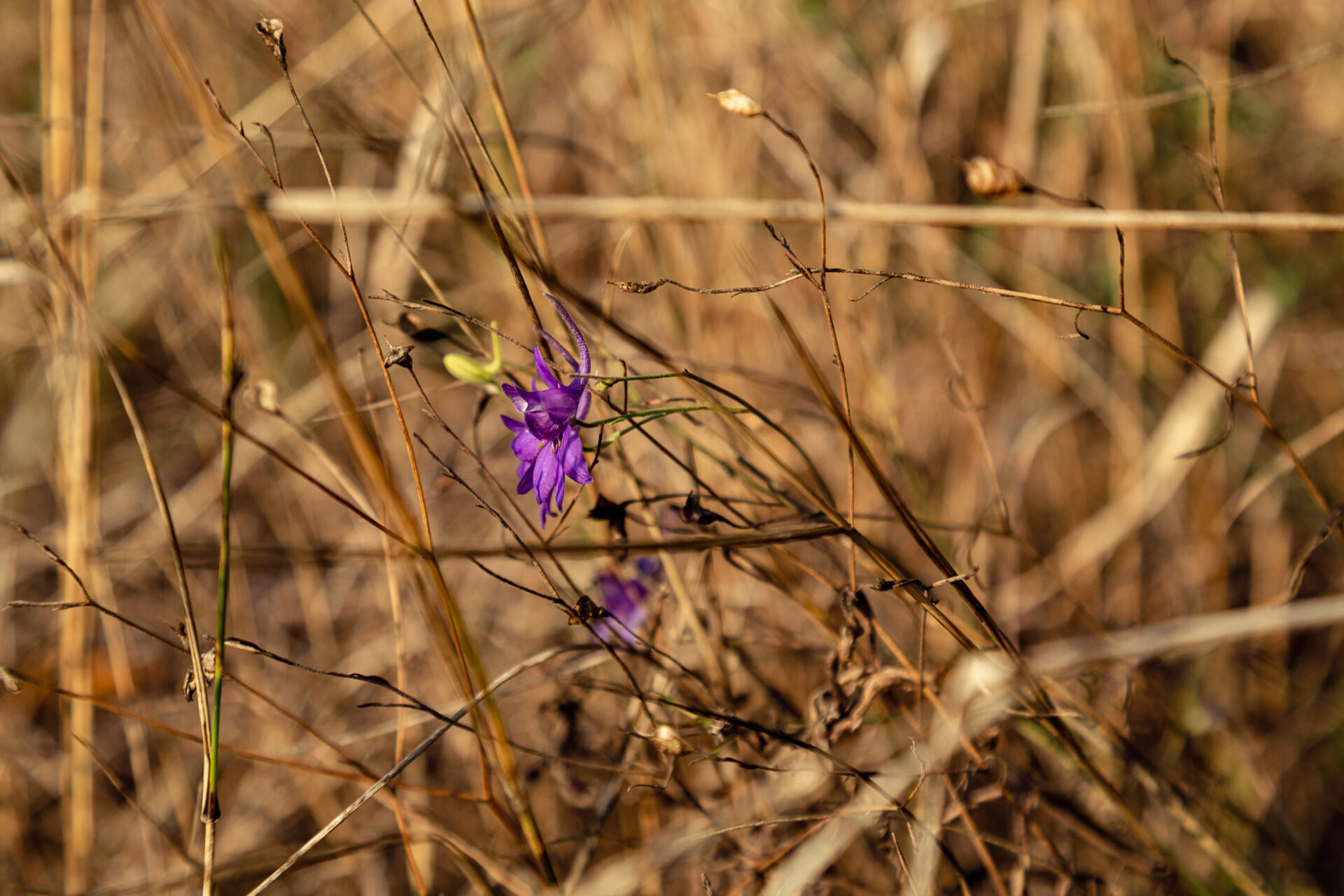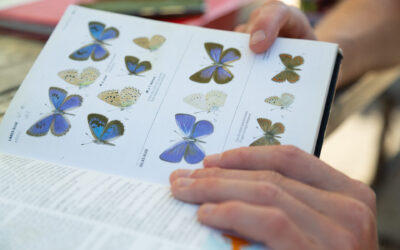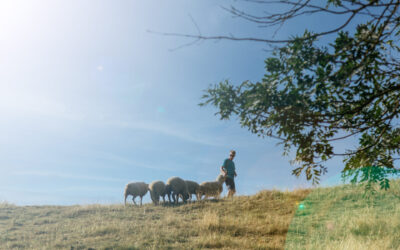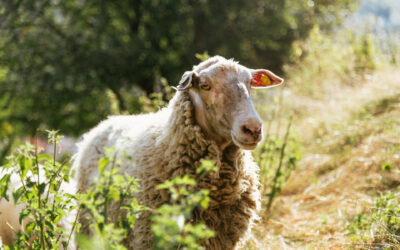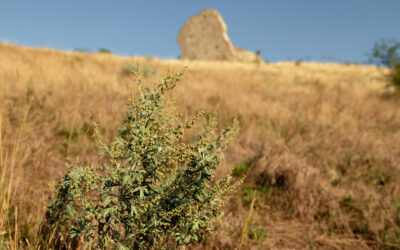Natural riches
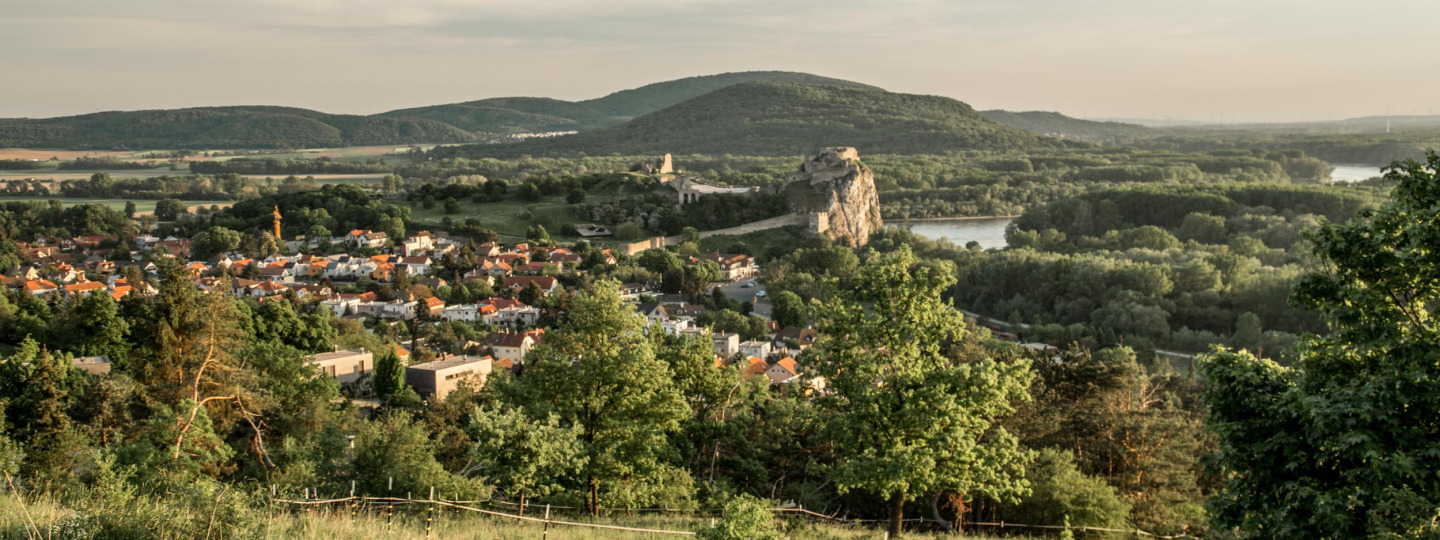
The most admired natural asset of Devín is the Dianthus praecox subsp. Lumnitzeri with white flowers. However, there is an equally rare steppe species – Austrian wormwood – which grows on the south-western hillside under the walls where the amphitheatre falls into ruin.
It’s the only place of its occurrence in Slovakia. It still grows there thanks to pasture. The surroundings were grazed by bisons, aurochses, and wild horses that did not allow big trees to grow and, thanks to their activity, a bright environment preferred by wormwoods and other animal species was kept there. Such countryside was full of butterflies and insects. Big herbivores became extinct but humans – shepherds with their herds – continued in their role to maintain the meadows which were previously grazed by wild herds.
Pasture in Devín and its surroundings was kept until the half of the last century as documented by orthophotos from 1948. Humans continued to maintain woodless conditions and, thanks to that, Austrian wormwood but also other species such as Campanula xylorrhiza, common immortelle, Gagea pusilla, Senecio erucifolius subsp. tenuifolius, Allium sphaerocephalon L., Papaver dubium subsp. austromoravicum, feather grass, and thyme or oregano, which is also called good mind, could survive under Devín.
A diverse meadow community was only preserved in the places where, due to various reasons, artificial planting of trees from the communistic times was not successful. At those times, meadows and biotopes of rocky slopes were not considered perspective. In accordance with the criteria of those times, a planted forest should be more useful although it did not belong to the environment at all as did not the planted species – Austrian pine, Robinia pseudoacacia.
In many places, planting was successful and the woodlessness ceased to exist. Pasture was stopped in the half of the 20th century. Plants can wait several decades in tubers or seeds, but not the insects. That’s why we cannot watch the large blue butterfly in Devín anymore since it was depending on thyme and oregano overgrown by tall grass.
As for butterflies, scarce swallowtail and chequered blue have still been living here. As for birds, wall creeper, a high-mountain species nesting in the High Tatras or Great Fatra, has been living here. It only spends the winter on the steepest rocks of Devín. The grey bird has a red pattern with white dots on its wings. It uses its tweezers-like beak as a hummingbird for catching insects in cavities.
Common kestrel is also hunting on the castle rock. One can also watch eagle owl living under Devínska Kobyla. Red kite flying high above the ground and preferring open space where it can land and collect food also uses to fly to Devín. Its occurrence is the evidence that, thanks to the re-introduced pasture, the woodlessness in the Devín surroundings is recovered again. Sea eagle, the biggest Slovak bird of prey with a wingspan of up to two and half metres, can also be found in the neighbourhood. It is not too skilful and eats mostly carcasses. Fish in the river is hunted by dice snake which likes to bask on sunny places.
Text author: Andrej Barát

More about natural riches
Clouded apollo disappeared together with bright forests
Clouded apollo is a butterfly species which prefers grazed bright forests. If the edge of a forest is grazed by animals, it is kept open without thorny bushes and branches of the trees start in the height where animals could not reach them anymore. When there is no...
Devín is the intersection of the roads used by the species
Variety of nature in Devín could be explained by the fact that the intersection of migration corridors is concerned here. Such corridors are very important in the European context. Animals migrating from the south to the north had always been passing this place. They...
The first place where humans started to breed their animals
From the ecology point of view, the interglacial periods are short anomalies only. Whereas the ice ages lasted tens of thousands of years, interglacial periods were very short – just a few thousand years. It happened that the human civilization taking advantages of...
It was a diverse meadow instead of a forest here
We can see a forest on the slopes of Devínska Kobyla, but it does not belong there. It was artificially planted on the rocky slopes at the time of socialism since the slopes were considered ugly and non-productive. At those times, exotic woody plants – Robinia...



